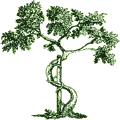
|
|||||||
Overuse Syndromes
What is overuse syndrome?
Overuse syndrome is a term used to describe a group of diseases that occur due to excessive stress on a anatomic area of the body. Typically, microtrauma occurs as a repeated injury usually not noticed initially because the injury is microscopic in magnitude. Over time, the cumulative trauma leads to pain and in some cases, significant disability. Overuse syndromes can occur at any age, although it is very common in children because of peculiarities of growth.
Examples of overuse syndromes in children include the following.
- Sever's disease - inflammation of the growth cartilage at the heel (the calcaneal apophysis) and the insertion of the Achilles tendon at the heel.
- Ankle sprain - especially the lateral ligaments.
- Shin splints - often used to describe pain along the shin of the leg, which could include stress fracture of the tibia, chronic exertional compartment syndrome, and periostitis of the tibia.
- Patello-femoral syndrome - also called anterior knee pain or chondromalacia patella.
- Little League elbow - or pitcher's elbow.
- Shoulder impingement syndrome - common in pitchers in baseball and swimmers
- Spondylolysis and Spondylolisthesis - common in gymnastics, football and weightlifting.
What causes overuse syndrome?
Factors that come into play include the following.
- Too much too soon. Overuse syndromes occur most commonly during the beginning of a season when athletes overtrain to get ready for the sport. Organized sports has also contributed to an epidemic of overuse syndromes by putting pressure on kids to excel. How much is too much? There is no easy answer. Some studies on certain sports have come out with data. For example, young female gymnasts who train more than 16 hours a week are known to have a significantly increased rate of injury. Young baseball pitchers who do more than 350 overhand throws a week are liable to significantly increased risk for injury. For most sports, however, there is no hard data. And it behooves the enlightened coach (and parent) to be sensitive to the needs and limitations of their young charges. The common sense approach is to stop and rest when it hurts, but when "winning is everything", common sense can be uncommon.
- Growth. Growth is a dynamic affair that during growth spurts, will cause tightness of certain muscles and tendons, especially the hamstrings, Achilles tendons and hip flexors. This creates extra tension on the muscle-tendon junction as well as the attachments of the tendons and muscles on the bone, which become more prone to injury. Also, the epiphyseal plates or growth zones at the ends of long bones are prone to injury.
- Anatomic malalignment. Genu valgum or knock knees can predispose a teenager to patello-femoral syndrome. Pes valgus or flatfeet can predispose a runner to posterior tibial tendinitis.
- Improper equipment. The child who uses a tennis racket that is meant for an adult is predisposed to elbow tendinitis. The runner who uses shoes that are not supportive or have enough cushion is predisposed to shin splints. The basketball player who trains on concrete or asphalt is more prone to plantar fasciitis.
- Nutritional and hormonal factors. Proper nutrition is essential for growth as well as for energy necessary for participation in sports. The young gymnasts who not only trains diligently, but also cuts down of food to keep her "ideal body form" is prone to amenorrhea and injuries. Physiological and bone age can be quite different from a child's chronological age, and this has to be taken into consideration.
What can be done to prevent or minimize overuse injuries?
The following should be considered.
- Avoid overuse. As discussed above, use common sense, and tailor a training program suitable for that child, taking into consideration his maturity and athletic ability.
- Proper nutrition. Make sure child has enough nutrition for growth and sports.
- Pre-sports physical. Any anatomic malignment should be corrected. For example, shoe inserts for pes valgus and genu valgum. Any tight muscles or tendons, or muscle imbalance should be corrected by stretching and strengthening exercises. For example, hamstring and heel cord tightness should be corrected by stretching. Muscle imbalance between the vastus lateralis and medialis (VMO) should be corrected to prevent patello-femoral pain. Any systemic or other general health problems should be addressed before the child participates in competitive sports.
- Proper warmup and stretching exercises specific to the sports before playing. Proper warmup could consist of 5 minutes of jogging till one gets a slight sweat. Then 5 minutes of stretching exercises would prepare the child for competition.
- Proper equipment. The runner should have shoes that have a firm and padded heel cushion, flexible sole for bending at the forefoot when running, and adequate cushioning. He should also train on soft running surfaces rather than concrete or asphalt. The young tennis player should be fitted for a racket that allows him to get a good grip on the handle.
NOTICE: The information presented is for your information only, and not a substitute for the medical advice of a qualified physician. Neither the author nor the publisher will be responsible for any harm or injury resulting from interpretations of the materials in this article.
Questions
or comments? Post your thoughts in the Orthoseek
Message Forum!
Find a pediatric orthopedic surgeon
in an area near you.
Home | About Us | Orthopaedic Topics | Message Forum
![]()
Comments, questions, or suggestions are welcome. Please
contact us using this form.